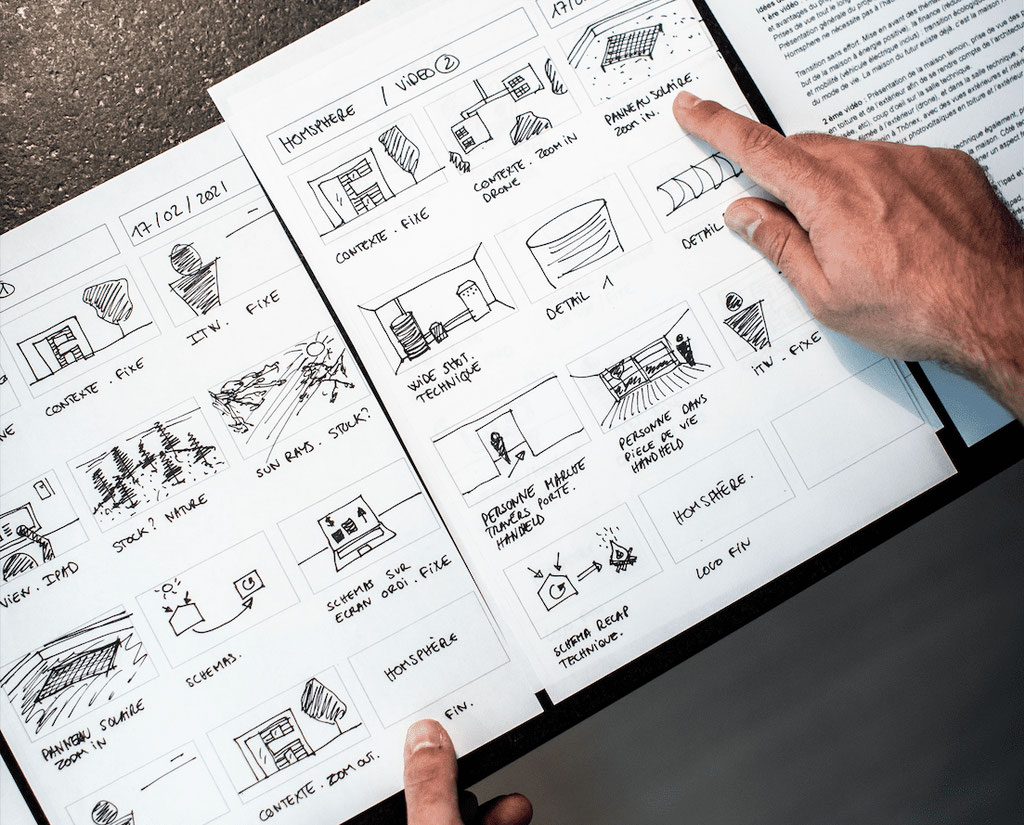
It doesn't matter whether you're talking about films, television shows, or modern experiences like virtual reality and extended reality, storyboards are a crucial part of the creative process.
In the context of a film, think about storyboards almost like a comic strip that represents the finished product. These sketches show everything - where the camera is going to move, where the actors are going to stand, what props are in the shot, etc. - all so that everything can be prepared and the proper feelings and emotions can be conveyed as that product is brought to life.
The concept is similar in terms of VR and XR, but with a few important differences, you'll need to be aware of these to guarantee the success of your project moving forward.
The Importance of Storyboarding in XR
Perhaps the biggest reason why storyboards are so integral to VR and XR has to do with the ways in which they can help enhance immersion on behalf of end users.
With virtual reality and extended reality, you want people to feel like you're really in the scenario being created for them. Take the HeroX NASA MarsXR 2 Challenge, for example. Here, participants will build virtual reality assets and scenarios that will be focused on extravehicular activities on the surface of Mars. These scenarios are to be used for research purposes, meaning they have to look, sound, act, and feel like the real deal. Winners can potentially receive a grand prize of $70,000.
In that particular example, storyboards need to serve the essential function of conveying information with as much clarity as possible. The judges will leverage them as an opportunity to determine what, if any, changes would need to be made before people begin building these assets and scenarios into the VR system itself. Think of storyboards as almost a "pre-visualization" in that way.
Storyboards are hugely beneficial to get to that point because they help visualize the end product. It's one thing to write down all of your notes and goals on reams of paper. It's another thing entirely to "get them up on their feet," so to speak, seeing how things will behave and what challenges need to be overcome before the hardest work begins in earnest.
Not only does this help everyone understand what work needs to be done, but it also goes a long way towards assisting with planning and organization as well.
What Makes a Good Storyboard?
By far, the most important quality that separates a good storyboard from a great one has to do with the clear visuals that you use to convey your essential ideas.
Remember that in the context of VR and XR in particular, "immersion" is absolutely what you're going for. Couple this with the idea that human beings are visual learners - they always have been and they always will be. Not only can the brain process images and videos up to 60,000 times faster than text alone, but people tend to remember more of what they're exposed to when it is paired with relevant visuals.
Because of that, clear visuals are always key for setting the stage and getting people invested in the journey you want to take them on.
That's not to say that text is unimportant when it comes to storyboarding, because it absolutely is. That's why a detailed script is another quality that you'll want to master. Overall, information needs to be conveyed with the utmost clarity so that people understand what they would be doing in a given scenario.
Consider how this works within the context of the Martian VR world, for example. Here, a storyboard would be critical to help plan out exactly what the "astronauts" will be doing in the chosen VR scenario. It's also important for them to know what items they will need and what their workspace will look like. Clear visuals, coupled with a detailed outline of their actions, will help get all of this information across.
But as we return to the theme of immersion, one must not forget the other element that makes a storyboard effective: the user perspective.
VR and XR are not passive experiences - far from it. They're designed to be as interactive as possible by their very nature. Not only can storyboards help you plan scripted actions and make decisions that support and empower the user experience, but they can also help identify any additional needs, unforeseen difficulties, or changes that need to be made before people begin the hard work of building these experiences within the VR system.
In the End
Overall, storyboards in a VR and XR context are critical for a few key reasons. In addition to enhancing the all-important quality of immersion, they help all parties properly visualize the end product as well. This goes a long way towards assisting with planning and organization, helping to keep everything on track.
Clear visuals. A detailed script. An emphasis on the user perspective. These all sound straightforward, but they add up to something far more powerful than any one of them could be individually: a roadmap that you can use to create the types of experiences that people will not soon forget.
If you are interested in applying your knowledge about good storyboards within the context of the HeroX NASA MarsXR 2 Challenge, please don't delay - join the challenge today!.








